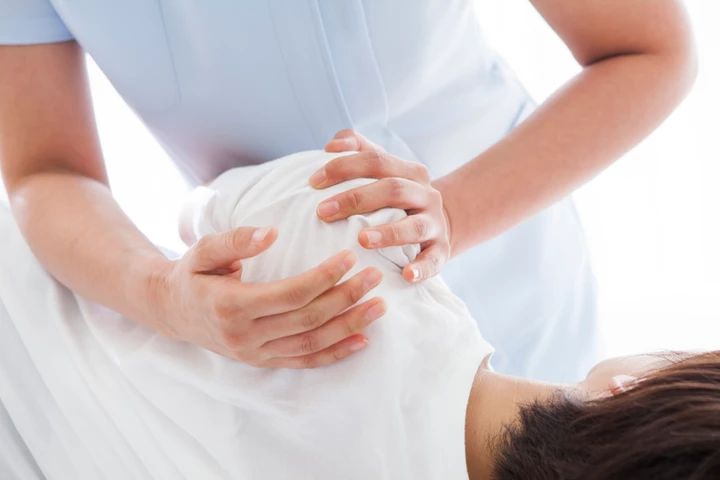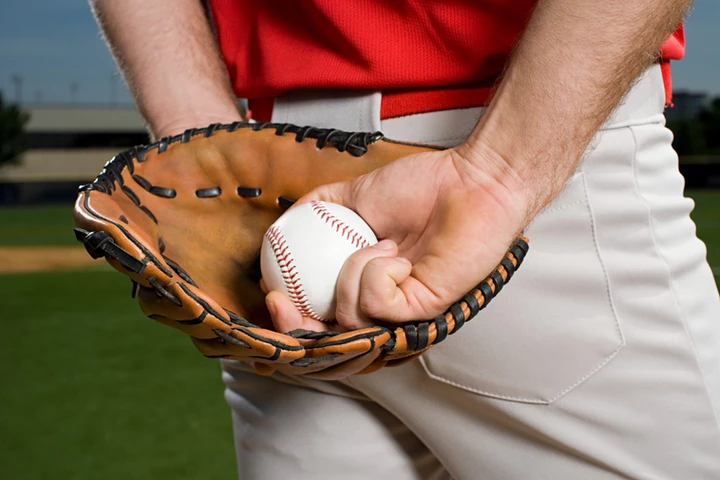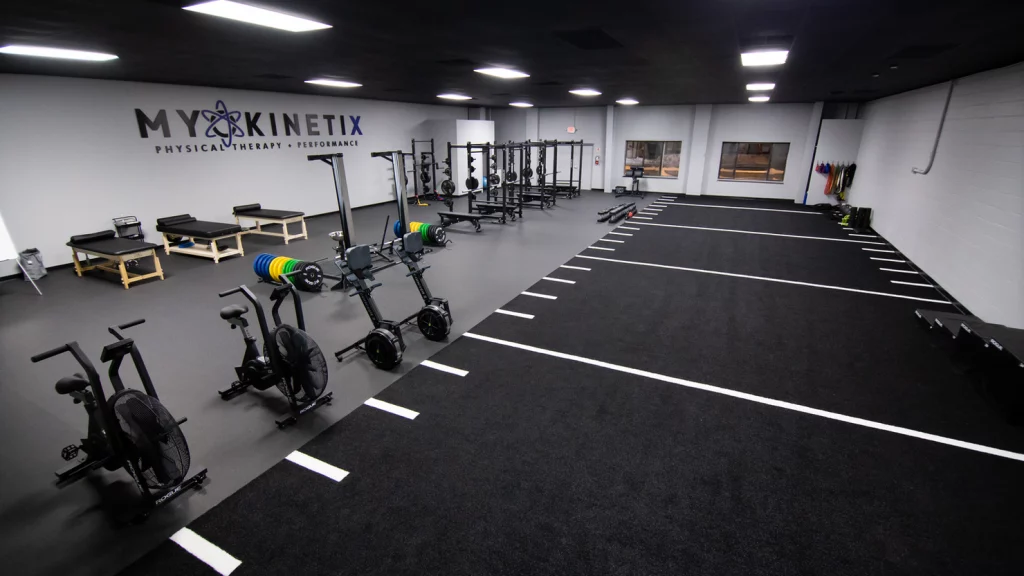- How Baseball and softball athletes are highly susceptible to shoulder injuries due to repetitive overhead motions, especially pitchers who throw at high velocity and frequency.
- What Shoulder injuries in throwing athletes can usually be treated without surgery, especially for chronic or overuse conditions.
- Why Conservative treatment, such as physical therapy and proper conditioning, can effectively address and prevent shoulder pain.
Let’s face it, there aren’t many sports that require as much overhead action as baseball and softball. Unfortunately, this means that your athlete is guaranteed to repeat the same throwing motions over and over again, and pitchers even more so. As a result, he or she is highly susceptible to injuries in the upper body, especially the shoulder.
Whether it’s caused by too many games in a row or poor throwing mechanics, overuse injuries in these athletes are practically unavoidable. With proper education, however, there’s a good shot at preventing some of the more common, and even complex, shoulder injuries if your child plays baseball or softball.
In this article, we’ll talk about some of the most frequently asked questions about shoulder pain in baseball and softball, and what you can expect for treatment. Then, we’ll discuss ways to prevent injuries in overhead athletes. Let’s get started!
What makes up the shoulder?
Protecting the joint is the shoulder capsule, which is made of different ligaments that connect the three bones together. The capsule provides stability and offers protection to the shoulder joint.
On the backside of the shoulder is where the rotator cuff muscles are located. This is a group of four muscles that meet at the top of the humerus and are responsible for stabilizing the arm shoulder as they move.
Did you know that the biceps also play a role in shoulder stabilization? It sits in front of the joint and attaches in two different spots to the shoulder joint. This is important to remember, especially when we discuss common shoulder problems in overhead athletes and throwers.
Perhaps surprisingly, the large muscles in the back are extremely important to the stability of the shoulder, specifically the shoulder blade. They also help control movements of the collarbone and shoulder blade, collectively known as the shoulder girdle.

As you can see, the shoulder joint is a complex structure. You should also be aware that it’s a bigger part of the body’s kinetic chain. Although baseball and softball are overhead sports, it’s important to know that other parts along the kinetic chain, aka the torso, hips, and legs, all play a part in the throwing motion. Therefore, when attempting to better understand shoulder injuries in the throwing athlete, any injury must also be looked at on a bigger scale.
Why are pitchers more prone to injuring their shoulders?
The simple answer is this: Pitchers throw the ball more frequently than any other field position player. If you are a parent to a pitcher, then realize that he/she is at an extremely high risk of developing injuries due to the increased repetitions and the velocity at which the ball is thrown.
Depending on the stage of the throwing cycle, the overhead motion will affect the shoulder joint differently. To grasp this, let’s take a look at the throwing cycle, which is made up of 6 main stages:
- Wind up
- Early cocking
- Late cocking
- Acceleration
- Deceleration
- Follow-through
The stages that place the most stress on the shoulder are the late cocking and deceleration phases. During these phases, the arm is forced into extreme external rotation. This pushes the top of the arm forward and stresses the ligaments in the front of the shoulder. Over time and with repeated motion, the ligaments loosen and make the athlete vulnerable to injury.

Conversely, when the arm is rapidly placed into the internal rotation to release the ball in the acceleration phase, the shoulder capsule and rotator cuff muscles must work overtime to (1) slow down the arm, and; (2) control the arm during deceleration. This places further stress on the rotator cuff muscles.
What are the most common shoulder injuries in baseball?
SLAP Tears
Recall that the biceps attach in two different spots on the shoulder joint. One of those sites of attachment joins with the labrum of the shoulder and can be injured when an athlete suffers a SLAP tear. In a SLAP tear, the top (superior) part of the labrum tears away from the bone, causing significant amounts of instability in the joint. While SLAP tears can result from traumatic experiences, like a car accident, they usually result from a gradual wearing down of the labrum that occurs slowly over time.
Common signs and symptoms experienced with SLAP tears are:
- Pain with shoulder movement
- A “locking” sensation
- Pain deep in the shoulder
- Decreased motion and strength
- Difficulty lifting objects
- Slower throwing speeds
Biceps Tendonitis
Simply put, biceps tendonitis is an inflammation of the biceps tendon(s). This directly results from the microtrauma that your athlete experiences as a result of the repetitive throwing motion.
Athletes with biceps tendonitis typically have pain in the front of the shoulder, decreased range of motion, and tenderness over the biceps tendon. Left untreated, it is possible for damage to progress to the point of a partial or full biceps tendon tear.
Rotator Cuff Tendonitis
Similar to biceps tendonitis, rotator cuff tendonitis is an inflammation of the rotator cuff tendons.
As we discussed before, the late cocking and deceleration phases of the throwing motion place a great amount of stress on the rotator cuff, and this is typically where this injury occurs.
The most common symptom of rotator cuff tendonitis is pain at night. However, those with this type of injury also experience:
- Pain radiating from the front of the shoulder to the side of the arm
- Pain during throwing
- Decreased motion and strength
Sadly, rotator cuff tendonitis can lead to bursitis, which is an inflammation of the bursa sac in the joint. The bursa provides lubrication that allows the rotator cuff tendons to glide smoothly over the bone as the arm moves.
The worst part about rotator cuff tendonitis is that there’s always the potential for a rotator cuff tear. Athletes with a tear experience the same symptoms at an increased intensity, along with a cracking or grinding sensation, when moving their arms.
Shoulder Instability
When microtraumas from the throwing motion affect the strength of the shoulder joint, there is a greater risk of shoulder dislocation or subluxation. Altogether, this is known as shoulder instability.
Dislocation of the shoulder occurs when the humerus slips out of the joint. Though it is a traumatic injury, it is most often a result of shoulder instability. On the other hand, subluxation occurs when the humerus sips slightly off-center from the joint but returns to its original position.
Athletes with shoulder instability commonly complain of feeling like their shoulder is “coming out of its socket,” pain, and decreases in pitching speed.
Shoulder Impingement
Impingement occurs when the rotator cuff tendons are pinched between the humerus and the labrum. It is a direct result of overthrowing and is commonly seen in younger athletes.
Symptoms include pain with shoulder movement (particularly internal rotation), and tight back muscles. If ignored, this can lead to rotator cuff injury and labrum damage.
GIRD (Glenohumeral Internal Rotation Deficit)
Without getting into the nitty-gritty, GIRD is a term used to describe loosened ligaments at the front of the shoulder. As a result, the soft tissues of the back tighten, leading to decreased internal rotation range of motion. This puts the athlete at a greater risk for labral tears and rotator cuff tendonitis and tears.
SICK Scapula
While there is a very complex description to explain its acronym, SICK Scapula is best translated as a problem with the way the shoulder blade, aka scapula, moves.
Repetitive throwing, coupled with poor technique, can lead to changes to the positioning of the shoulder blade against the rib cage. When combined with overhead movements, like throwing, your athlete becomes at risk for rotator cuff lesions, impingement, and labral tears.
If your athlete has SICK Scapula, then he or she may have one of the following:
- Drooping of the affected shoulder
- Pain at the front of the shoulder, near the collarbone
- Tight chest muscles
How are these shoulder injuries treated?
Most often, shoulder injuries in the throwing athlete can be treated conservatively without surgery, especially those that can be described as chronic or overuse injuries. Nonsurgical treatment, like physical therapy, has proven to be extremely effective, although surgical options are available in the case that it fails.
Conservative treatment typically includes:
- Activity modification
- Ice and over-the-counter pain medication (Ibuprofen, Tylenol)
- Physical therapy
- Correction of throwing mechanics
In the case of long-term pain relief for athletes who do not want to explore the surgical route, cortisone injections are an option, but they’re not typically recommended for younger athletes.
When treating any type of shoulder injury for throwing athletes, it’s necessary to address the athlete’s kinetic chain in its entirety. Adding core strengthening, along with hip abductor strengthening and stretching of the lead hip – right-handed throwers lead with their left hip, and vice versa – can set overhead athletes up for a more efficient throwing motion and aid in the recovery process.
Can shoulder pain in baseball and softball be prevented?
Surprisingly, yes.
With proper conditioning, proper throwing mechanics, adequate recovery time (between games and practices), stretching and strengthening programs, and pitching guidelines and restrictions, shoulder pain is avoidable. Proper education of the various shoulder injuries that overhead athletes may experience is crucial to prevention, as well.
There are several generic strength programs available for baseball players who are looking to rehabilitate and prevent shoulder injuries in the throwing athlete. The most common program is known as the “Thrower’s 10,” but it might not be exactly what your athlete needs to feel better and get back on the mound. For highly individualized and expert care, visit the sports rehabilitation experts at Myokinetix. Our doctors of physical therapy will lead your athlete through a tailored return-to-throwing program that not only relieves shoulder pain but also prevents future injuries from recurring. Don’t delay in making an appointment today – call us at 973-585-4990.


Thanks for sharing your info. I truly appreciate your efforts and I will bewaiting for your next write ups thanks once again.
Great post here. Lots of information, I look forward to reading more from you.